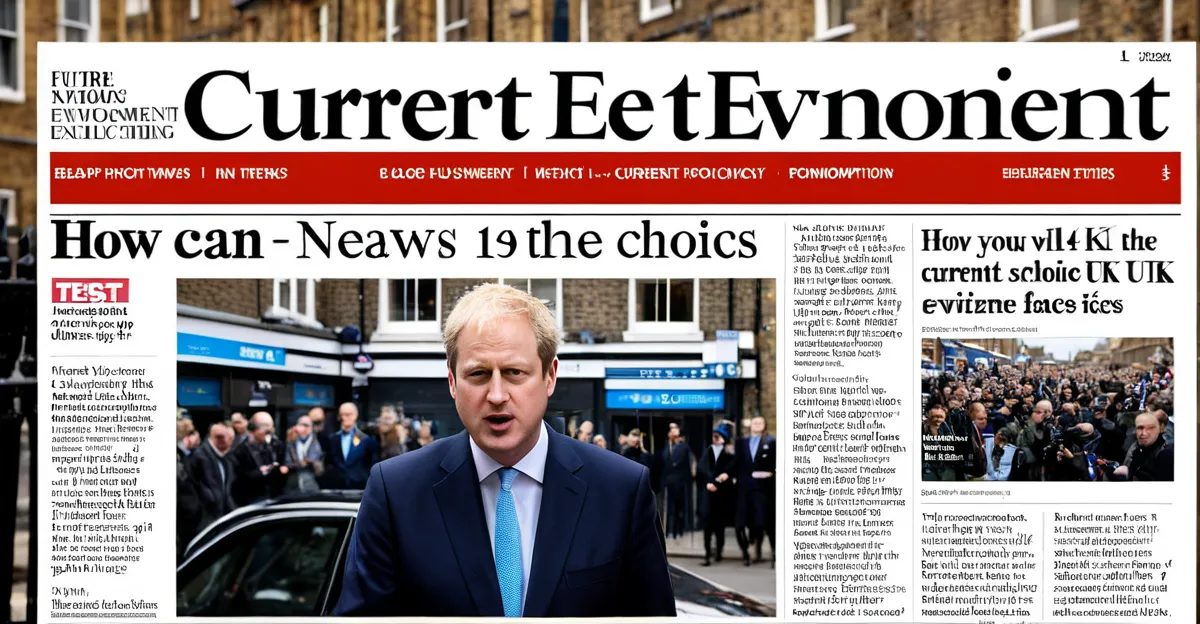Overview of the Current UK News Landscape
The UK news landscape is undergoing significant transformation, primarily driven by shifts in how audiences consume information. Traditional media trends reveal a steady migration from print and broadcast outlets toward digital platforms. This change reshapes the public discourse as major news outlets expand their online presence, integrating multimedia formats to engage a broader audience.
Recent data highlights that news consumption now heavily favors mobile and on-demand services, reflecting an appetite for instant updates and personalized content. Social media platforms, in particular, have become central hubs for news distribution, allowing rapid sharing but also raising concerns about the reliability of sources.
This might interest you : How Could Recent Changes in UK Policies Impact Your Daily Life?
Key topics dominating the UK news spectrum include political developments, healthcare issues, social reforms, and economic challenges. These subjects often gain traction through a feedback mechanism where public interest amplifies media coverage, which in turn influences policymaking focus.
Overall, the evolving UK news landscape exemplifies a dynamic interplay between technological innovation and consumer behavior, shaping how information is produced, circulated, and ultimately impacts public awareness and decision-making processes.
In parallel : Brexit: What Are the Latest Developments and Their Impacts on the UK?
Mechanisms through Which Media Influences Policy
Understanding the dynamic relationship between media and policymaking
The media influence on policy operates chiefly through two well-established processes: agenda-setting and framing. Agenda-setting refers to the media’s power to highlight certain issues, effectively signaling their importance to the public and policymakers. This selective emphasis directs attention to topics that might otherwise remain peripheral. Framing complements this by shaping how these issues are presented—through specific narratives or contexts that influence public interpretation and reaction.
A critical component in this mechanism is the feedback loop between media narratives and public opinion. When the media persistently covers an issue with a particular frame, public attitudes often shift accordingly. Policymakers monitor these trends closely as changes in public sentiment can pressure them to act or reconsider existing policies. For example, sustained coverage of healthcare challenges or social reforms spurs political debate and legislative proposals.
This process is not one-way; policymakers themselves engage with media outlets to set agendas or reframe issues to align with their goals. Thus, the interplay between media influence on policy, agenda-setting, framing, and public opinion forms a complex, interdependent cycle shaping the UK policy environment.
Challenges of Media Influence: Bias, Ownership, and Fragmentation
The UK news landscape is shaped not only by media trends but also by complex challenges such as media bias, ownership concentration, and misinformation. Ownership dynamics significantly influence editorial slants. Major outlets controlled by a small number of corporations often reflect the priorities or viewpoints of their proprietors, affecting the diversity of perspectives available to the public. This concentration risks narrowing public discourse and skewing policy debates.
Misinformation compounds this problem, especially as social media platforms amplify unverified content rapidly. The speed of news consumption, while beneficial for immediacy, can undermine accuracy, causing polarisation as readers gravitate toward sources that confirm their existing beliefs. This fragmentation divides audiences, complicating the formation of cohesive public opinion and making it harder for policymakers to gauge true societal consensus.
Fragmentation also manifests geographically and demographically, where regional news differs widely from national narratives, further challenging unified policymaking. Addressing these issues requires awareness of structural biases and promoting media literacy to help audiences critically assess varied news sources. Only by mitigating the effects of bias and fragmentation can the media influence on policy remain constructive and reflective of the wider public interest.
Notable Recent Examples: News Impacting Policy Decisions
Exploring key cases where news shaped UK policy
The UK news landscape has witnessed several high-profile events illustrating the profound news impact case studies on policy changes. Notably, the Partygate scandal brought sustained media scrutiny to political leadership, intensifying public outcry and forcing governmental accountability measures. The relentless coverage amplified the issue on the political agenda, demonstrating effective media influence on policy via agenda-setting.
Similarly, widespread reporting on NHS strikes highlighted systemic healthcare pressures, driving renewed debates on funding and workforce policies. These cases exemplify how persistent media narratives can steer political response toward urgent reforms.
Government responses to sustained media campaigns often include commissioning inquiries or introducing policy adjustments reflecting public sentiment fueled by news coverage. Investigative journalism plays a crucial role by uncovering facts that propel legislative attention. For example, in-depth reporting exposes underlying institutional problems, creating pressure for transparency and action.
These examples reveal the cyclical dynamic where news impact case studies inform public opinion, which in turn compels policymakers to address highlighted issues. The robust interplay between media narratives and policymaking underscores the media’s pivotal role in shaping the UK’s political and social landscape.
